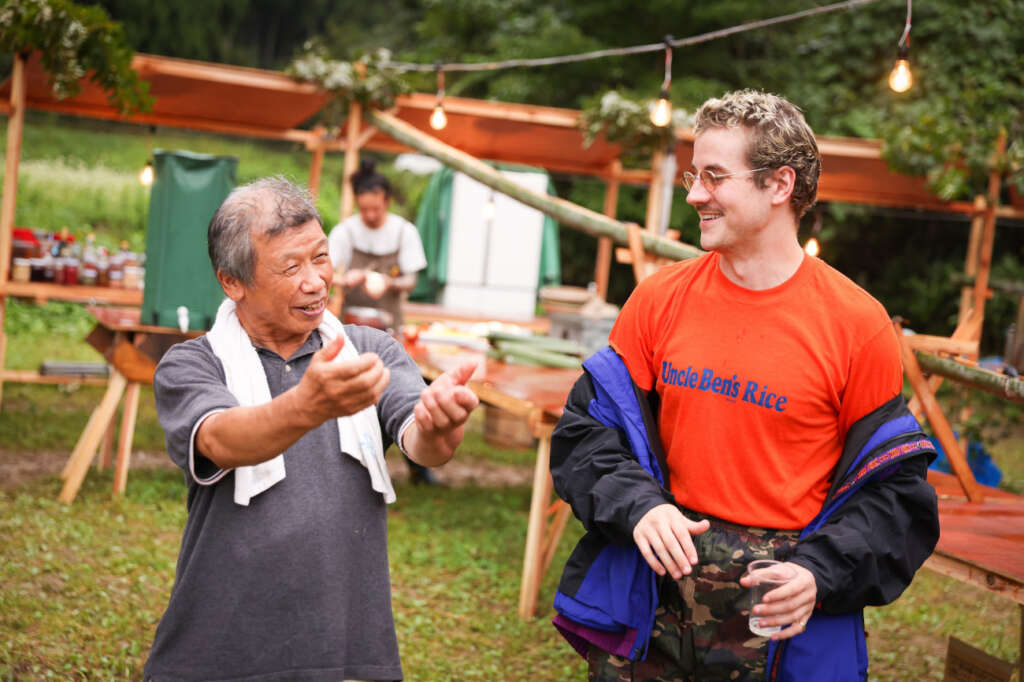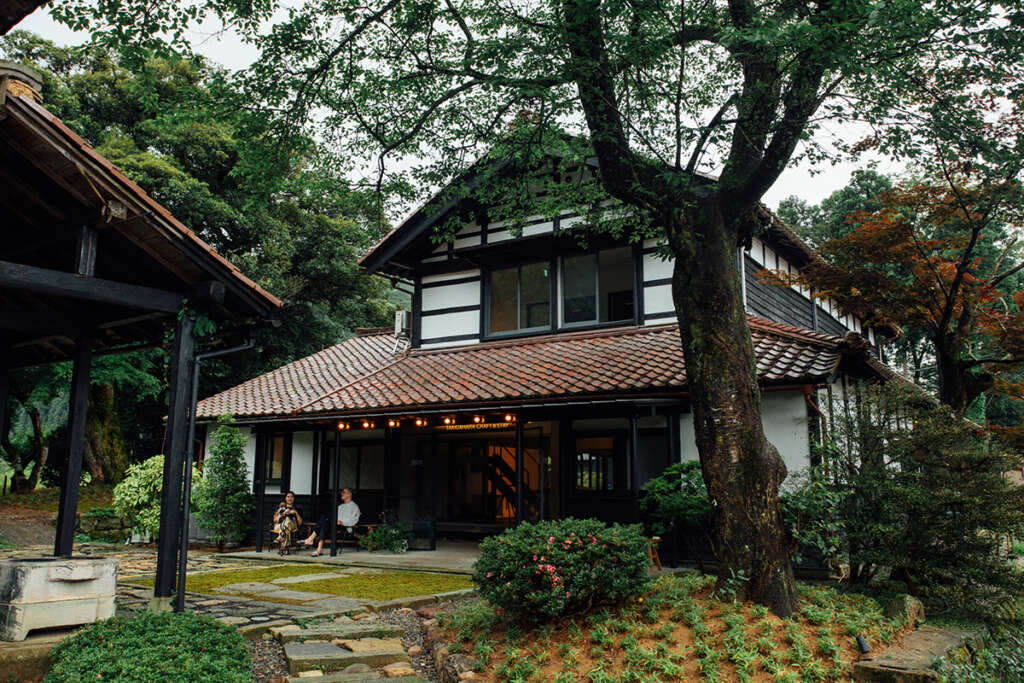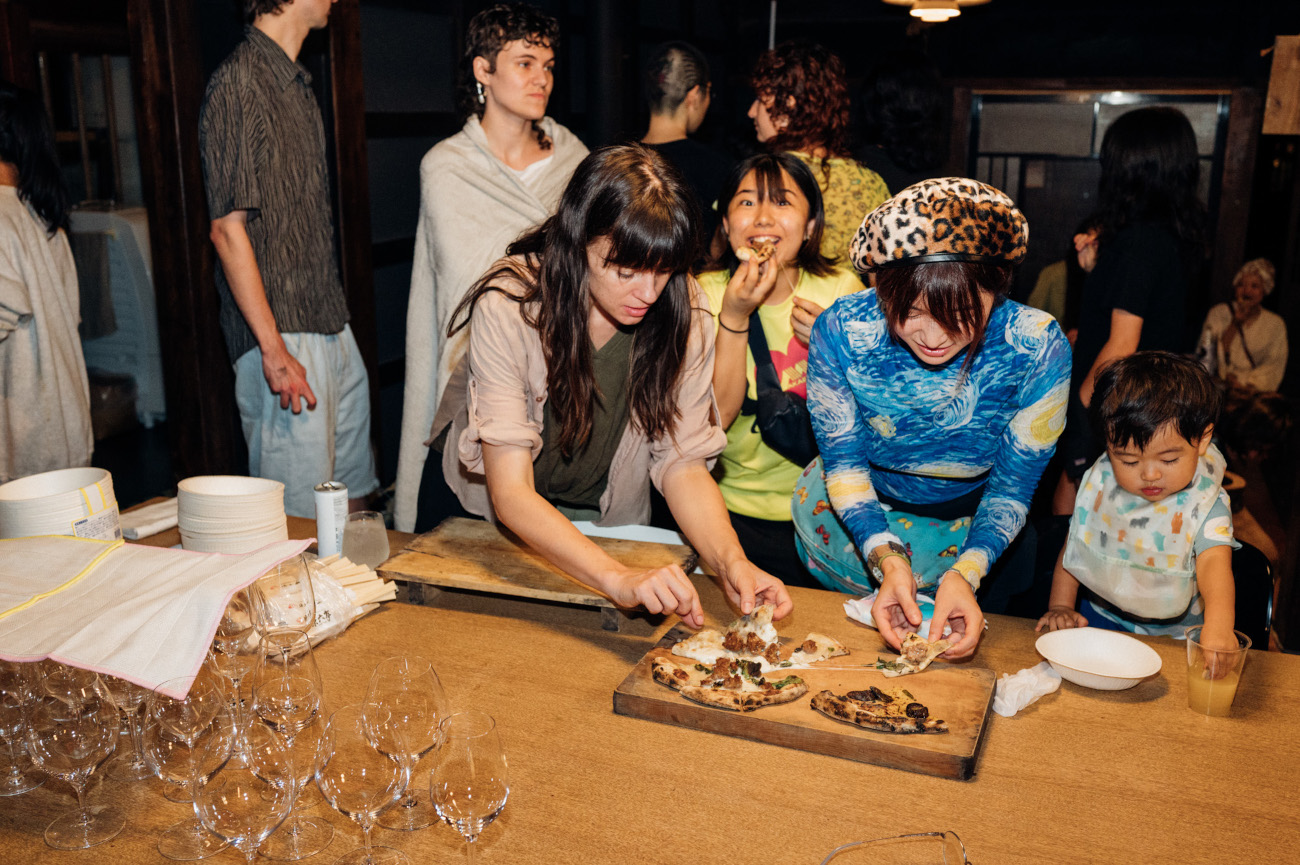retreat schedule
Bessō Takigahara: Foraging, Fermenting + Seasonal Cooking
This program is an insight into the source of our food and an opportunity to learn from the symbiotic relationship that exists between humans, the land and the sea in Takigaraha village.
From chopsticks to salt to ingredients to plate, together we will build a meal from our surroundings over the course of 10 days: carving bamboo, making salt from seawater, foraging edible plants, fermenting, and embracing the practice of seasonal cooking.
Japanese language and culture workshops are also a component of this program.


Detailed Workshop Description
ohashi | chopsticks
In pursuit of mindful eating, we wish to contemplate more than just the food on our plates.
Bamboo is a versatile, energetic plant that grows plentifully all over Japan. Villagers in Takigahara are trying to control its spread, and are therefore always happy to share their trees for the use of making chopsticks, tables and other woodcraft.
Chopsticks, or hashi in Japanese (the ‘o’ in front hashi confers respect and gratitude), are gentle utensils that, with elegance, serve as tools for us to eat with. Guided by Nari-san’s expertise in traditional craft, we will each make a pair of reusable bamboo chopsticks to use during our time in Takigahara – and to take home afterwards.
shio | salt
Salt is a catalyst, a conductor – an ingredient that makes flavours taste more vivid.
Every coastal community in Japan has their own way of extracting salt. Ishikawa is blessed with a long coastline and clean seawater, making it perfect for salt-making.
For this field trip and workshop, we will travel to Kurosaki beach, where we will learn to forage sea water and make our own salt – which we will use at the cooking workshop at the end of the week.
shio koji | traditional seasoning
Fermentation is a natural means of preserving foods and enhancing flavour. It is also a source of nutrition.
Koji, a type of fungus, is the foundation of Japanese fermentation, and is found in sake, soy sauce, miso, amazake and more.
Shio koji is a traditional seasoning and fermenting agent made with water, salt and koji. Sweet and savoury with umami undertones, shio koji has incredible properties building flavour in dressings and sauces, and can also be used to tenderise meat.
Its versatility in cooking, complex flavour profile and potential gut health benefits have made it increasingly popular in global culinary circles, and in this workshop, we’ll be making shio koji using local ingredients and our homemade salt.
We will also be using koji to make the traditional Japanese sweet fermented rice drink amazake, which is rich in vitamins, minerals and amino acids.
saishu | foraging
Takigahara rests at the edge of Ishikawa’s mountain range, and is a place where villagers collaborate with each other to cultivate rice on paddies between the clusters of houses dotted through the valley. Each household also grows their own vegetables, sustaining themselves throughout the year.
In addition to these cultivated foods, Takigahara’s forests and creeks are full of wild edible plants that change throughout the seasons, which the villagers gratefully forage as an addition to their pantries.
On this field trip and workshop, we will go for a guided foraging walk with Anna, looking at the village with edible glasses and gathering ingredients with which to cook.
natsu yasai no ryōri | summer vegetable cooking
Every season has its own characteristics. A carrot grown in winter and carrot grown in summer are two different vegetables, as their flavour profiles change with temperature and climate.
There will be no recipes used in this hands-on cooking workshop. Instead, we will be learning to pair flavours from principles with a sensitivity to the characteristics of summer, gaining an appreciation of the value in sustainable cooking with local, seasonal produce.
This meal will be cooked and then enjoyed together: the fruit of many intentional days of craft, foraging and learning.
nihongo | Japanese
As travellers, learning the language/s of the places we visit demonstrates to locals that we are making an effort to be respectful, unlocks cultural understanding and often gives way to beautiful, meaningful interactions. This is especially true in a regional area like Takigahara village, where English is not widely spoken.
Over the course of our retreat, Megumi will teach five hour-long classes that will serve as an introduction to conversational Japanese and Japanese culture. Learn about cultural niceties (and not-so-niceties), and wrap your mouth around how to greet people, order a lunchtime onigiri, ask how to get to the top of the mountain for sunset and wax lyrical about how delicious the valley-grown vegetables are.
jānaringu | creative non-fiction / journalling workshop
The importance of storytelling cannot be understated. Story has the power to connect us, to soothe, to teach, to spur action, to effect change. On a more personal level, writing our own stories helps us make sense of the world around us and gives us autonomy over what we glean from our experiences.
At its core, Astray is a storytelling project centred on travel, place, culture and identity — journeys both physical and metaphysical. In this workshop, Gemma will host a discussion and facilitate a writing workshop centred on place-based, creative non-fiction as a journaling practice, creating a space for us to reflect on our time spent at Takigara and what we have learned from the land, the sea and the community.



